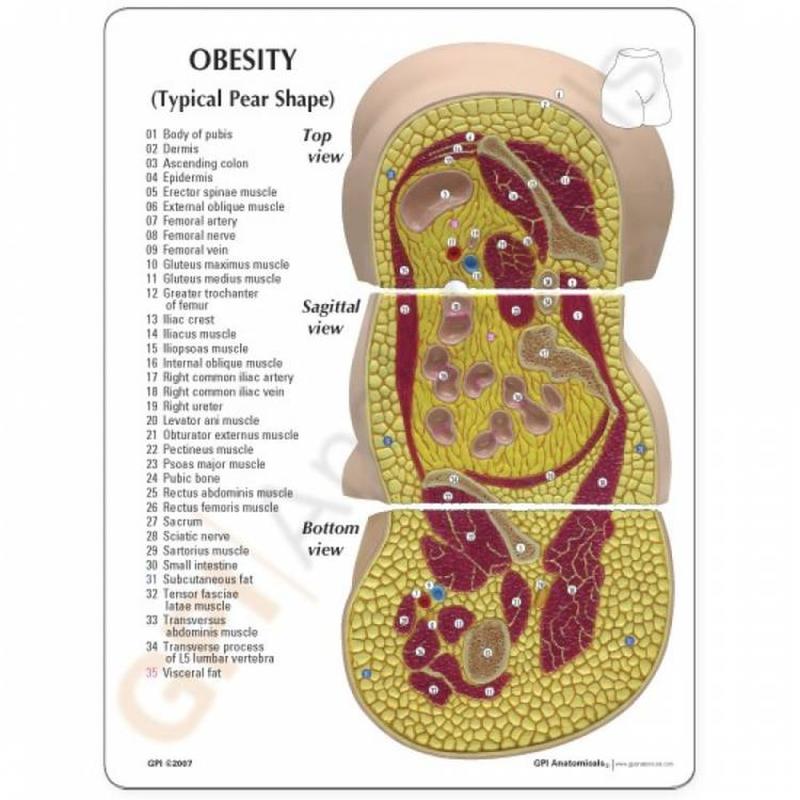Everyone fears getting fat, especially as we age. The older that a person gets, the easier it is to store fat (also called "adipose tissue"). Normally, when we are younger, our metabolism works at a faster rate. Plus we have more free time, which means it is easier to find time during the day when you can exercise, or take a walk with friends. The good news is that not all fat is equal - today we are going to be examining the six different types of body fat, and how you can manage them.

You may have been reading various diets and exercise guides online, explaining to you that the only thing that matters to lose weight is to keep a daily calorie deficit. This is not entirely true - many people eat very little food, yet are still gaining weight.

There are some people who gain weight due to earing a lot of high-carb food. High carb food is the easiest way to gain weight - bodybuilders use it to gain muscles, but sedentary people are at risk of fat gain, due to decreased levels of muscle-protein synthesis.

The good news is that cutting out food that is high in carbs is a very fast way to lose weight. Carbs make us retain more water, and if you have watched, "The Biggest Loser" show - the contestants can easily lose 5-10 pounds of water weight per week.

Normally, you shouldn't be losing a lot of weight per week. 1-2 pounds is what most doctors regard as the safe weight loss range. Water weight is not part of this math since water does not function as a tissue in the body. Only fat and protein can form body tissues.

They say that losing weight is 80% diet and 20% exercise. This appears to be true - for most people, if you are willing to go low enough with your caloric intake, you could lose weight even with a sedentary lifestyle. Exercise can speed up your exercise by a factor of two.

For the next few paragraphs, you should remember the first image in this article. We will be explaining what the other types of obesity are, and how to combat them. Second on the list after total body obesity (from a high-carb food intake) is the abdominal obesity.

People who carry the most weight around their stomach and "love handles," may have stress or anxiety issues. If you are mostly gaining weight around the mid-section of your body, and are also craving sugars on a daily basis, you may be stressed out.

The best to fight abdominal obesity, apart from the usual answer of "diet and exercise," is to take extra activities that can help you release your emotions. Take a yoga class or a walk through the neighborhood. Chatting with friends also helps.

Gluteal obesity is when you gain fat on your thighs and buttocks. This type of body fat is typical of women, especially adolescent girls or when a woman enters menopause. Gluteal obesity can also happen to individuals that have a hormonal imbalance.

The only way to eliminate gluteal obesity is through physical activity. You can't change your body, and you can't tell it where to store fat. But you can decrease your total body fat percentage. Men with this type of fat could also check their hormones.

Officially, this type of obesity is called "Atherogenic metabolic obesity," but is more commonly known as a having a "beer belly." As the name says, people get a "beer belly" because of drinking too much alcohol. Note that any type of alcohol can cause this - not just beer.

The answer to how to lose a beer belly is quite simple - you just quit drinking beer, and other types of alcohol. You don't have to go cold-turkey, but the more you can limit your alcohol habit, the faster you are going to get results.

A "Venous" type obesity is a genetic-type of obesity. As with all other types of genetic disorders, there is not much you can do to fight it. If anyone else in your family has a venous type obesity, you are also going to run the risk of having it at some point in your life.

This is one of the most frequent types of obesity in the developed world. Not everyone is guilty of intentionally becoming obese due to being sedentary - sadly, too many people spend too many hours on their computers. Read next about how to get an active lifestyle.

The key to getting an active lifestyle is discipline. You don't need to invest any amount of money in fitness equipment, or expensive classes. You just have to make a daily commitment to walking, running or swimming. Strive to be active for at least 5 hours per week.
